Classic Tanzania - Photo Safari - Feb 2019
19-28 February 2019
In February 2019 Grant and Helena Atkinson will lead a private group of photographers to some of Tanzania’s greatest wildlife areas. We start off at the world-famous Ngorongoro Crater and spend some time here making the most of the spectacular scenic backdrop. We time the rest of our safari to coincide with the Great Migration of wildebeests and zebras at the peak of the wildebeest calving season, as much as this can be predicted. The areas we visit are rich in predators like lion, cheetah and spotted hyena. All images in the gallery are from the 2018 safari to these destinations.
This safari represents a fantastic combination of superb wildlife photography experiences, comfortable accommodation and expert guiding. As always, we will spend lots of time out in the field, and you will be with like-minded photographers who are happy to put in the time to get the images. We will be staying in classic tented safari camps. For big parts of the safari, we will have the ability to go off-road (not in environmentally sensitive areas) in order to get the best photographic angles of our subjects.
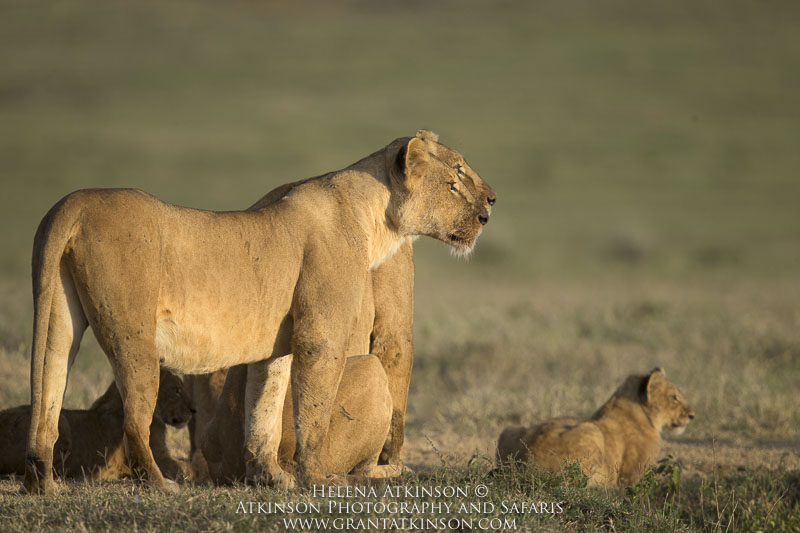
Safari Highlights
• Eight days on safari in the best areas of southern Tanzania – the Ngorongoro Crater and the Serengeti.
•
We welcome photographers with all levels of experience.
•
This safari will be conducive to learning from one another and include instruction that will suit everyone’s photographic needs.
•
We focus on photographing in the field. We spend most of our time and effort on photographic activities and getting images.
• Non-photographer or videographer spouses / travel companions will also have fun on this safari. The wildlife places we visit will appeal to anyone with a love for animals and nature.
• The photo leaders are experienced naturalists with rich backgrounds in conservation, field guiding and the region’s natural history and wildlife.
•
We are visiting this region at the historical peak of the Great Migration and potentially during the wildebeest calving season (this is rain-dependent) to maximize our photographic opportunities.
•
A maximum of 3 photographers per vehicle means that there will be plenty of space to have your gear at the ready and the opportunity to access both sides of the vehicle.
•
We have modified safari vehicles, specifically optimized for photographers to help us in getting the best images on our trip. The vehicles have 3 rows of seats within, and there are large openings along the side and top of each vehicle for photographers to work from, with minimal obstruction. Roll-up canvas blinds will provide protection from the elements if and when needed.
•
Two photographic leaders, Grant and Helena Atkinson will lead the group, along with a Tanzanian head guide and guide team. We have partnered with Topguides Safaris and as such, are assured of a very experienced team with excellent local knowledge to ensure a high-quality experience.
•
The group size is limited to 6 participants and we will make use of 2 vehicles. The photographic leaders will switch between the vehicles. With 2 photo leaders and only 6 participants we focus on individual attention.
•
Extra luggage allowances to accommodate the special needs of our photographic equipment (for our one flight from Serengeti back to Arusha).
•
Classic style safari accommodation with bucket showers at tented camps for an authentic safari experience.
•
Camp locations are specifically chosen to maximize photographic opportunities by being as close as possible to the prime wildlife areas.
•
This itinerary focuses on up-close and real wildlife experiences from the surroundings of our very comfortable accommodations.
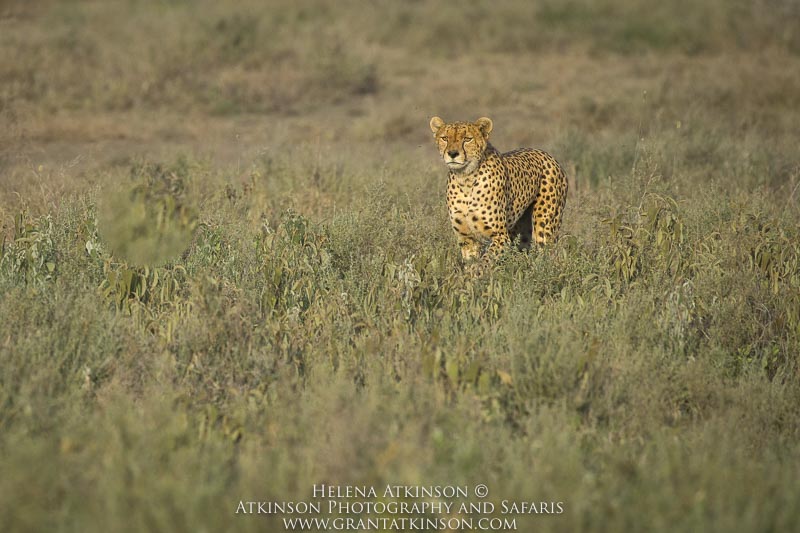
IS THIS SAFARI FOR YOU?
Here are some key points to help
you decide:
1. We welcome photographers
of ALL levels. This safari will be conducive to learning from one another and include instruction that will suit everyone’s photographic needs. No question is off limits, no inquiry too basic.
2. We are BIG on photographing in the field. We will spend most our time and effort on safari / photographic activities and making images.
3. Non-photographer or videographer spouses / travel
companions will love these safaris. The wildlife experiences on this trip will appeal to anyone with a love for animals and nature. We have specialist guides
leading all safari activities and optional activities (walking,
balloon safaris, etc.) are also available subject to camp restrictions. |
THE ITINERARY
19-20 February 2019; (1 night)
RIVERTREES COUNTRY INN - Arusha,
Tanzania  Jump
to Rivertrees Country Inn Jump
to Rivertrees Country Inn |
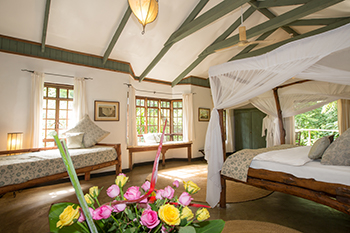 On your arrival at Kilimanjaro International Airport, you will be met by our local representative, who will assist you by means of a closed-vehicle road transfer from the airport to our accommodation in Arusha town for the night. On your arrival at Kilimanjaro International Airport, you will be met by our local representative, who will assist you by means of a closed-vehicle road transfer from the airport to our accommodation in Arusha town for the night.
Set just outside the bustling safari town of Arusha, Rivertrees Country Inn is perfectly situated for exploring this interesting area. The inn is a charming country estate that was once an old coffee farm. Set on ten acres of fertile greenery, the grounds are a natural extension of Mount Meru’s sloping foothills, and offer a sanctuary for birds and some indigenous primates to the area. If you arrive with enough time in hand, there is a chance of spotting two uncommon primate species, the black-and-white colobus monkey and the diadem (blue) monkey, within the lodge grounds.
The cottages are nestled along the river and in thickets of tall forest trees. The restaurant on the premises serves tasty and wholesome meals and the best of the region’s locally grown coffees. A trip into town or other activities can be arranged if you would like, so coming a day earlier is a possibility.
On the morning of the 20 February, we will drive to the Sanctuary Ngorongoro Crater Camp near the Ngorongoro Crater. |
20-22 February 2019;
(2 Nights)
SANCTUARY NGORONGORO CRATER CAMP - Ngorongoro Crater, Tanzania  Jump
to Ngorongoro Crater Camp Jump
to Ngorongoro Crater Camp |
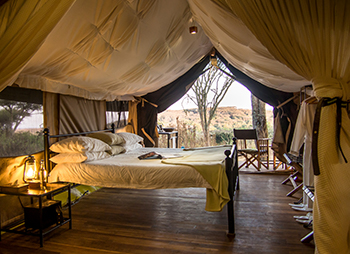 Our drive to the Crater will take us through some typical Tanzanian country-side and will take us about three to four hours, which will include a lunch stop. Our drive to the Crater will take us through some typical Tanzanian country-side and will take us about three to four hours, which will include a lunch stop.
The Ngorongoro Conservation Area (NCA) offers one of the richest wildlife viewing experiences on the African continent. Part of the Serengeti ecosystem, the region covers 8,292 sq km and encompasses expansive short-grass plains on the southern border of the Serengeti National Park, as well as the dramatic Ngorongoro Highlands region, with its enormous calderas and spectacular vistas. The NCA is a UNESCO World Heritage Site that takes its name from the volcanic crater, the world's largest inactive, intact and unfilled volcanic caldera, formed two to three million years ago.
Approximately 25,000 large animals live in the natural enclosure formed by the 300-sq-km crater, while the greater conservancy surroundings are home to wildebeest and zebra migratory movements in the wet season. It was recently voted one of the Seven Natural Wonders of Africa.
The beautiful and incredibly game-rich Ngorongoro Crater is the main feature of the region and is an iconic natural wonder of the world. The enclosed caldera is an ecosystem in itself within the greater Serengeti: the mineral-rich floor of the spectacular bowl is largely flat and covered in nutritious grasses, providing a paradise for herbivores and predators alike.
Our accommodation for 2 nights in the NCA will be at the Sanctuary Ngorongoro Crater Camp. The camp is located in the Ngorongoro Crater rim valley, close to the access road into the crater, giving guests unrivaled access to this region. The camp offers ten classic safari tents, each with its own en-suite bathroom and indoor safari (bucket) shower, with a personal tent attendant filling your bucket shower on request to the perfect temperature from the outside. The tents also feature hairdryers and plug points and a small sitting area in front. The main common areas include a dining area, bar area and lounge area.
On the 21st of February, we will rise early and drive down into the Crater to photograph and observe the plentiful wildlife and the beautiful landscapes within. We will pend most of the day on the Crater floor before driving back up to our camp.
Early on the morning of 22 February, we will depart in our vehicles for the wildlife-rich plains of the Serengeti National Park. |
22-25 February 2019;
(3 Nights)
OLAKIRA CAMP – Ndutu Region, Serengeti, Tanzania  Jump
to Olakira
Camp Jump
to Olakira
Camp |
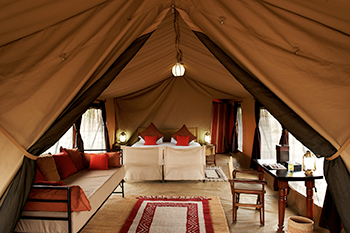 We travel by road from Ngorongoro to our next location, which is at Ndutu. We travel by road from Ngorongoro to our next location, which is at Ndutu.
Our next camp, Olakira, is located in the famous and game-rich Ndutu area (officially located just within the southern portion of the Ngorongoro Conservation Area). The road transfer will take us from the highlands around the Crater through Maasai community lands and is of approximately 3-4 hours duration. We will reach Ndutu in time for an afternoon game drive on our first day there.
The Ndutu area has some varied and interesting habitats, from the open, short-grass plains to the acacia woodland that flourishes along the edges of the waterways and their marshes, that are very conducive to good wildlife photography.
This camp has nine tents. There are charging points for phones, cameras etc in each tent.
During our stay at Olakira, we will traverse within the Ngorongoro Conservation Area. This area is well known for good sightings of lion, sometimes cheetah, as well as many other species like giraffe, buffalo, and other herbivores. The grassy plains here are also a vital part of the wildebeest’s route, and provide them with the nutrition they need for their journey.
After our morning game outing on the 25 February, we drive to our next camp, Kimondo Migration Camp |
25-28 February 2019;
(3 Nights)
KIMONDO MIGRATION CAMP – Southern Serengeti, Tanzania  Jump
to Kimondo
Camp Jump
to Kimondo
Camp |
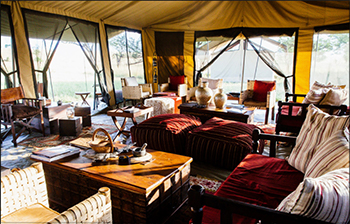 On February 25 we travel by road and cross over into the famous Serengeti National Park to spend 3 days photographing the abundant wildlife and potentially the herds of the Great Migration. On February 25 we travel by road and cross over into the famous Serengeti National Park to spend 3 days photographing the abundant wildlife and potentially the herds of the Great Migration.
The Serengeti, which covers nearly 15,000 sq km, is arguably one of the greatest wildlife experiences on the planet. As winter eases into summer, the migratory herds are situated in the southern Serengeti and this is where we will be based. It is on these grassy plains that the huge herds of wildebeest that have wandered for hundreds of kilometers have a chance to graze, rest and calve. Here the wildebeest mothers give birth to several calves in a remarkably synchronized event.
We hope to enjoy amazing opportunities to photograph and witness the spectacle, along with the local carnivore guild that includes spotted hyena, lion, cheetah, black-backed and golden jackals. Whilst leopards do occur in the Serengeti we do not expect to find them very often and prefer to focus our time on other species. Bird life is also prolific in the region and is further enriched by many migrant species at this time.
Our accommodation here for three nights is Kimondo Migration Camp, which is not too far from Olakira. Kimondo is a mobile safari camp that tracks the seasonal migration and is located in the lush southern Serengeti grasslands in the height of summer. Kimondo has just eight tents, each with a focus on traditional safari style and comfort. There are charging points for phones, cameras etc in each tent. |
28 February 2019
END OF SAFARI |
After our last morning in the Serengeti (February 28), we will board our charter flight (cost included) back to Arusha where the safari ends.
International flights may be scheduled to depart that evening to home destinations. See note below regarding travel extensions. |
NOTE: Air travel and customized
extensions to this safari, including other camps in Kenya and/or Tanzania, gorilla trekking in Rwanda, or other destinations may be arranged through Eyes on Africa as
desired. Ask us for further information.
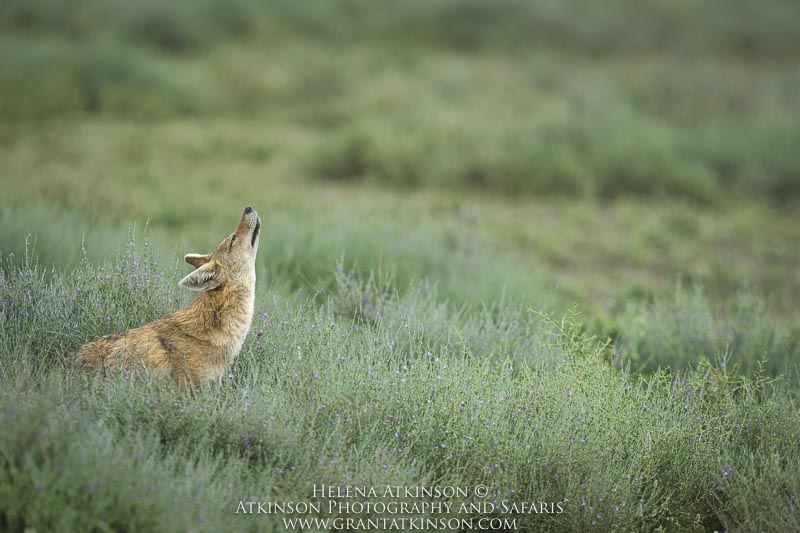
COSTS
The cost of the safari is $12,200 per person. This fee includes all in-country ground and air transportation as well as hotel accommodation (double occupancy) and all meals (except as noted above and in exclusions below).
A limited number of single rooms are available; the single supplement cost is $1,900.
Please note: We will attempt to adhere to this itinerary as much as possible. However, certain conditions (political, climatic, environmental, cultural, or wildlife migrations) may necessitate changes in the itinerary. We reserves the right to alter any itinerary at any time, if necessary. We will attempt to notify participants of changes as far in advance as possible. Costs incurred by such changes will be the responsibility of the participant.
INCLUSIONS & EXCLUSIONS
WHAT IS INCLUDED
• Accommodation on a shared basis, however should you want single accommodation on the safari, please get in touch and inquire if this is possible.
• 2 x trip leader (Grant and Helena Atkinson).
•
Private safari vehicles throughout the trip.
•
Luggage allowance for Serengeti – Arusha air charters (extra freight seats have been arranged): 70-75 pounds per person in total.
•
All safari activities and transfers to/from the airports and the hotels.
•
All meals and drinks at both safari camps (excluding premium drinks).
• Daily laundry at both safari camps (except for underwear).
• All applicable conservancy and national park fees.
• Meet & Assist service on arrival in Arusha.
• Scheduled air charter from Serengeti back to Arusha.
WHAT IS NOT INCLUDED
• International airfare and / or other transportation between your home and Kilimanjaro Airport, Tanzania.
•
Dinner / drinks in Arusha on Day 1, due to the late arrivals (except at breakfast)
•
Discretionary gratuities for hotel staff in Arusha and safari camps.
•
Discretionary gratuities for driver guides (who will be with us throughout our trip).
•
Laundry or extras in Arusha (laundry is included in the safari camps).
•
Visas, travel insurance, personal purchases (including curios, special spirit liquors, telephone calls, etc).
•
Optional pre- / post-safari tours and meals or accommodation before or after the safari.
NOTES
• This trip will run with a minimum of 3 participants and a maximum of 6 participants.
•
Air travel and customized extensions to this safari, including other camps in Kenya and/or Tanzania, gorilla trekking in Rwanda, or other destinations may be arranged through Eyes on Africa as desired. Ask us for further information.
•
During the safari we will share our work flow and processing techniques on the computer. To make the most of this opportunity you are advised to bring a laptop and card reader as well as enough external storage for these sessions as well as the editing software you are most comfortable with. Grant and Helena both use Adobe Lightroom and Photoshop CC.
•
Discretionary gratuities for driver guides are recommended at USD $25 to $30 per person per day.
•
Discretionary gratuities for camp and hotel staff are recommended at USD $15 to $25 per person per day.
•
Any discretionary gratuities for guides, staff and trip leaders should be paid out in cash.
•
Some safari camps will only accept cash for private purchases.
•
Although most safari lodges offer complimentary internet access, connections are unreliable and extremely slow.
•
Tropical rain showers can occur this time of year and you should bring rain gear both for yourself and your camera equipment.
•
Laundry services are offered but no underwear will be done, although you can do this in your room with laundry soap provided.
•
At some facilities charging of batteries can only be done in the main area, however we expect to be able to charge camera batteries and computers in the tents.
•
Lower temperatures can be expected at the Ngorongoro crater than elsewhere on the trip
•
Special dietary requirements can be accommodated if sent through beforehand.
Please read our Safari Code of Ethics and Conduct.
HOW DO I SIGN UP?
Our group size is a minimum of 3 participants and a maximum of 6 participants and we expect that this trip will fill up. If this exciting safari sounds good and you're excited by the thought of joining on this trip, then now is the time to register. Remember, there will be limited space available for this trip and when the spots are spoken for, that's it. If you have any questions before registering, send an e-mail with any inquiries to adele@eyesonafrica.net or simply call us (800-457-9575) and ask to speak to Adele.
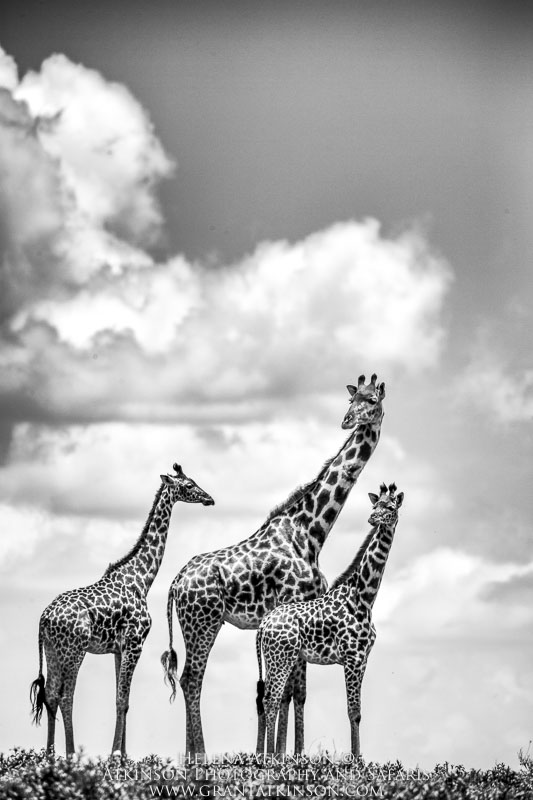
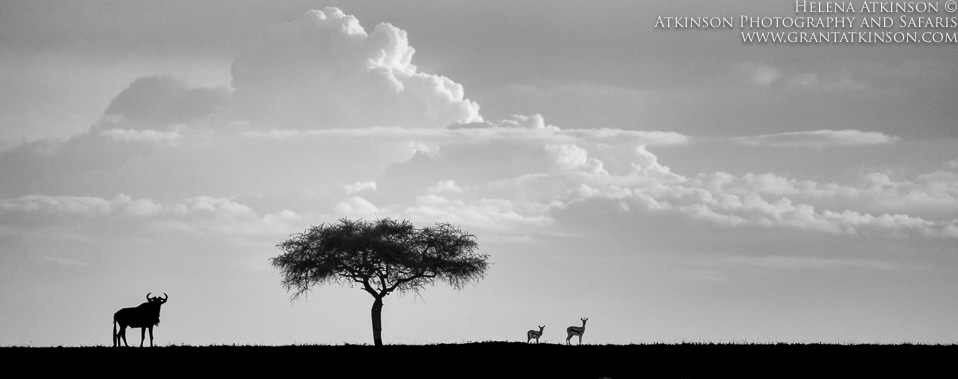
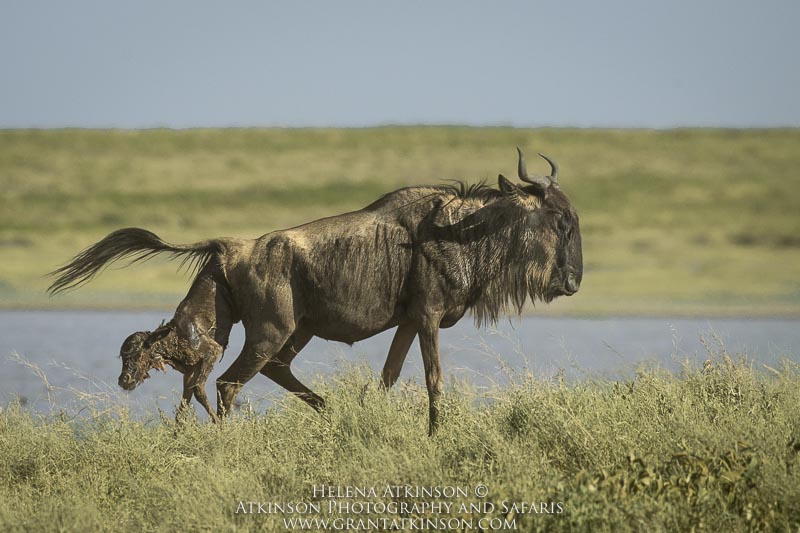
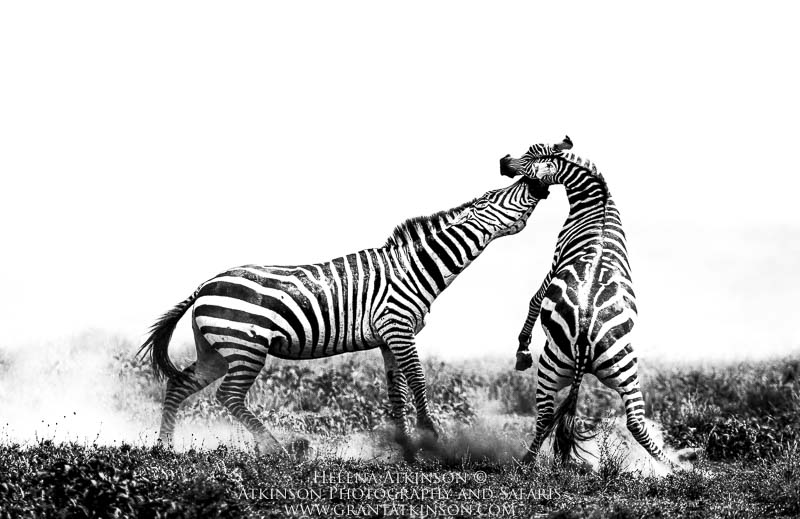
 Top Top  Return to Digital Photo Safaris / Workshops Return to Digital Photo Safaris / Workshops
|